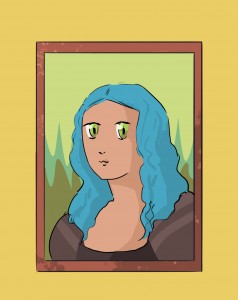Destigmatizing anime

While watching anime, people who don’t have much experience with it may have problems understanding exactly what it is.

While watching anime, people who don’t have much experience with it may have problems understanding exactly what it is.
“I always get the ‘ohhh…?’ ” said Wilfrid Laurier University ministry of anime president Jill Nichols.
“And they kind of back away a little or they go ‘oh that’s interesting!’ and then they can’t find anything to say about it.”
The most important thing for the non-anime-watching world to understand is that anime is not simply defined as a cartoon.
“[People think] that it’s either Pokémon or porn … that it’s one or the other.”
While such anime does exist, this overgeneralization is dangerously inaccurate and can lead many to believe false information.
Most people’s experiences with anime have been during childhood.
“A lot of anime … that people are introduced to is stuff they watched as a kid in passing like Yugi-Oh or Pokémon or Sailor Moon and they feel that it’s either very childish or very sexualized,” Nichols said.
Many will watch anime before recognizing it as anime, which is one reason why so many lump it in with other children’s cartoons.
While animated — anime literally meaning “animation” in Japanese — it is not restricted to children in the slightest. It can become very graphic very quickly, with twice the capabilities of live action TV.
“I don’t see it as just cartoons for adults, I see it as a different medium, a different way to get your ideas across,” said Nichols. “And you can do it in a more creative fashion than you could have with, say, live action with live actors.”
Those who don’t know what to expect often get caught in an explicit or graphic scene they were not prepared to watch, staining their appreciation for the style. Over the years, anime has become the victim of stigmatization by western audiences, which may be because of the content. It may also be because of how it presents itself.
“A lot of anime is what we call ‘subbed’ so it’s just subtitles … a lot of people have aversions to the fact that it’s speaking another language, so you have to read it,” Nichols explained.
This can be a major turn-off for many potential anime watchers as well as increase the stigma.
“When we hear someone say ‘anime’ we get a very different image of the person. We think that, yeah they are weird or maybe they just want to stay in their little hovel and don’t want to come out.”
“But I think that it’s very tricky to break something, especially if it’s engrained in our culture because it has been ‘weird’ for x number of generations,” Nichols said.
For all the odd things a person will be exposed to, anime opens up a new road in a person’s media repertoire. It expands someone’s perception of animation and its possibilities.
“I always recommend watching just to try it because you won’t like something until you try it,” said Nichols. “But it’s up to the person. If they feel that this is not for them, that’s fine. The only thing I ask is that they don’t snub their nose at it because someone else watches it. Because you don’t know.”
Anime, while different, is still a form of TV that crushes stereotypes inside its community.
In a few years, it may even crush the stigmas coming from the outside.


